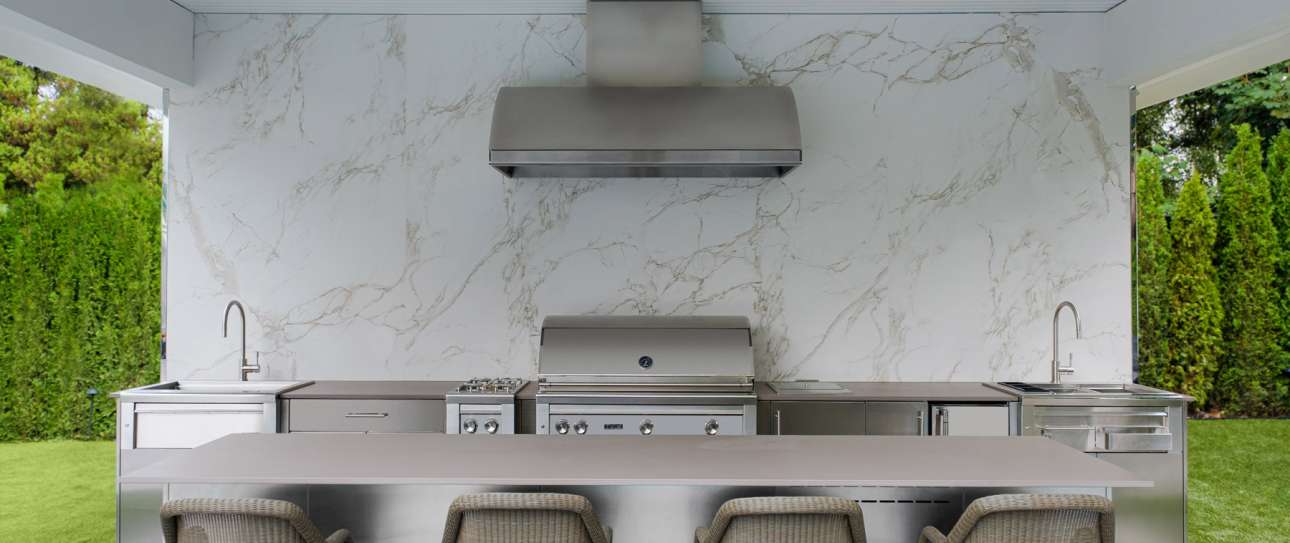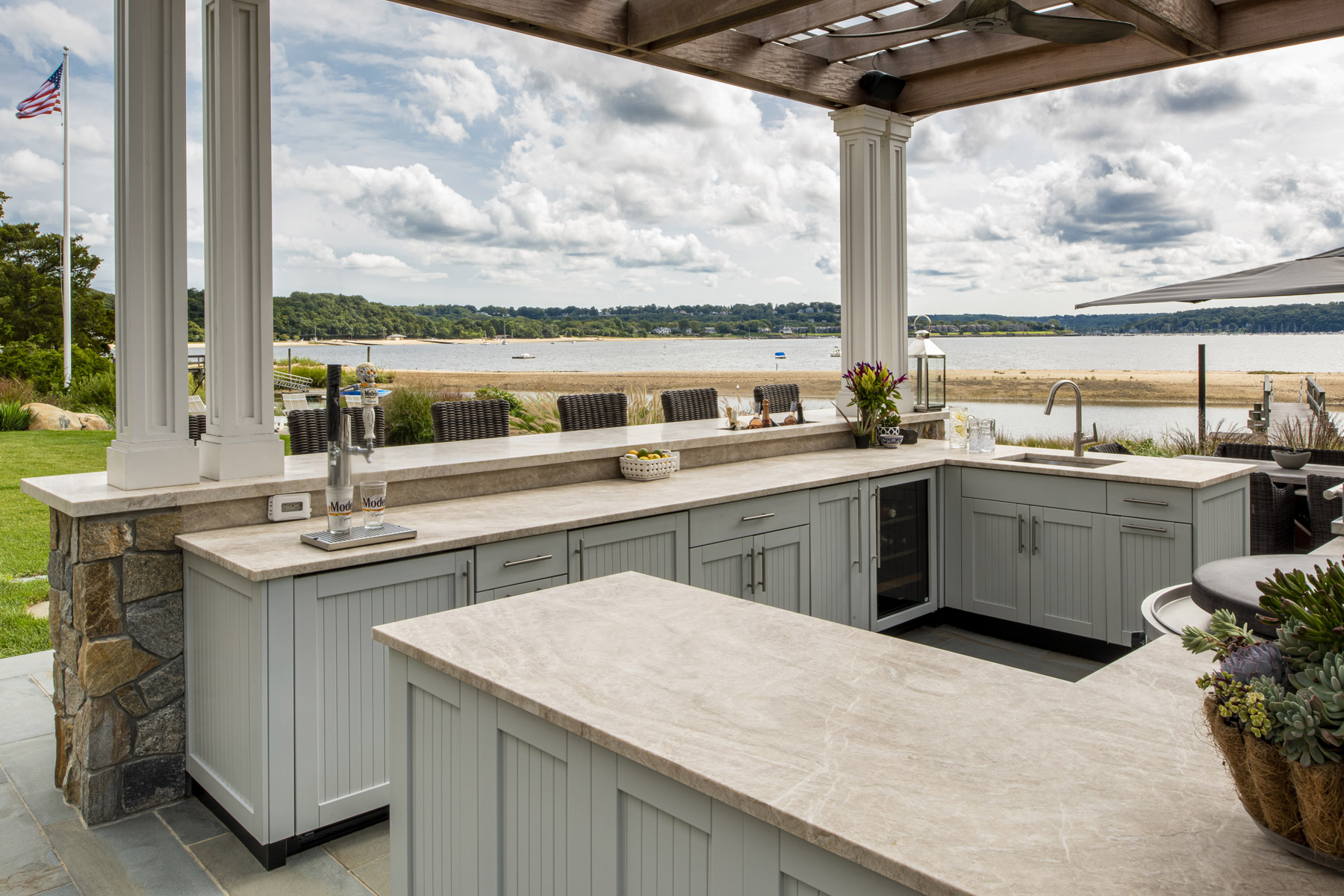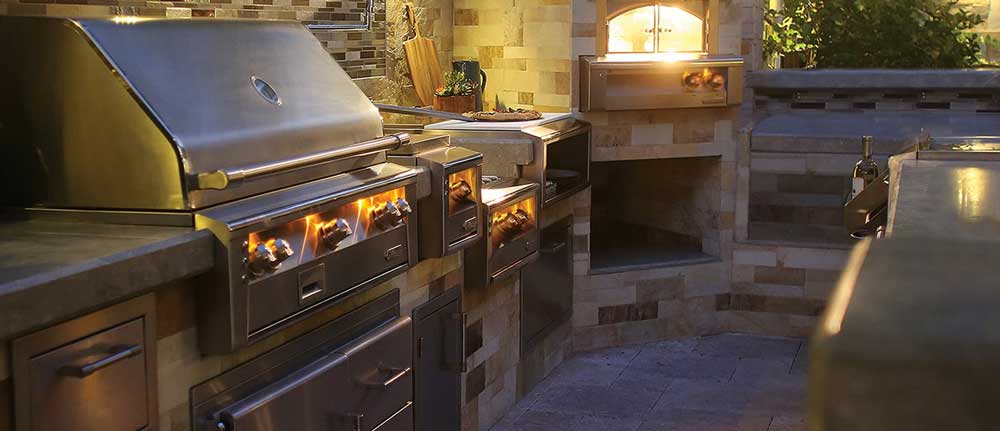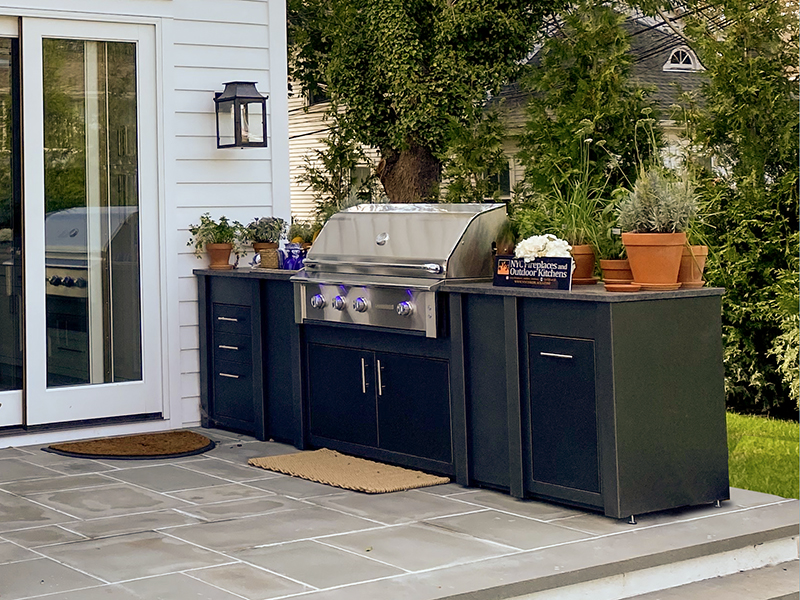
Top Ten tips for planning your Sonoma County outdoor kitchen and outdoor space
1. Identify Your Outdoor Kitchen Needs
When planning for an outdoor kitchen in Northern California, it is important to identify your needs before making any decisions. The first factor to consider is the size of your outdoor kitchen, which should be based on the available space and your lifestyle. If you frequently entertain guests, you may need a larger kitchen with more seating and cooking areas. Next, determine the appliances needed based on your cooking preferences and budget. For example, if you love to grill, invest in a high-quality grill and accessories. Finally, consider the layout that best suits your lifestyle. A U-shaped or L-shaped design can provide ample counter space and make it easier to prepare and serve food. Remember to review client blueprints, appliance placement, and specifications to ensure your outdoor kitchen meets your needs. OnFire Santa Rosa offers Powder-coated stainless steel outdoor cabinetry from Danver, Trex, and Brown Jordan Outdoor Kitchens offer great options for durability and minimal maintenance.
2. Research Your Outdoor Kitchen Options
When researching outdoor kitchen options, there are a few important factors to consider in order to make the most of your new outdoor space. First, decide whether you want a built-in or freestanding outdoor kitchen. Built-in kitchens are a great option for those looking for a seamless and integrated look, while freestanding kitchens offer more flexibility and can be moved around as needed.
Next, consider the materials commonly used for outdoor kitchen construction, such as stainless steel, stone, and concrete. Stainless steel is a popular choice for its durability and sleek look, while stone and concrete offer a more natural and rustic feel.
To find reputable outdoor kitchen builders, start by asking for recommendations from friends and family. You can also search online for local builders and read reviews from past clients. When evaluating a builder’s qualifications, look for experience, licensing and insurance, and examples of past work.
Additional resources for researching outdoor kitchen options include home improvement magazines and websites, as well as visiting home and garden shows. By carefully considering your options and doing your research, you can create the perfect outdoor kitchen for your needs and budget.
Featured Outdoor Kitchen Brands
3. Consider Your Budget
When planning for a new outdoor space, it’s important to consider your budget to ensure that you don’t overspend. To set a realistic budget, start by determining how much you can afford to spend without causing financial stress. When budgeting for outdoor kitchen projects, consider the cost of appliances, materials, labor, and any necessary permits. Prioritize your spending by identifying the must-haves and nice-to-haves. Must-haves may include a grill, sink, and storage space, while nice-to-haves could be a pizza oven or outdoor fireplace. By setting a realistic budget and prioritizing your spending, you can create a beautiful and functional outdoor space that fits your needs and budget.
4. Think About the Aesthetic
When designing an outdoor kitchen, it is important to consider the overall aesthetic of your outdoor space. Here are three tips to keep in mind when selecting materials and design elements for your outdoor kitchen:
- Choose materials that complement your existing outdoor space. Consider the color scheme, texture, and overall style of your outdoor area when selecting materials for your kitchen. For example, if you have a modern outdoor space with clean lines and neutral colors, consider using stainless steel appliances and sleek countertops.
- Create a cohesive look by incorporating similar design elements throughout your outdoor space. For example, if you have a stone fireplace in your outdoor living area, consider using the same stone for your outdoor kitchen countertops or backsplash.
- Balance functionality with aesthetics. While it is important to select materials and design elements that look great, it is equally important to choose items that are functional and practical for your outdoor cooking needs. Consider the size of your outdoor space and the type of cooking you will be doing when selecting appliances and storage options.
By keeping these tips in mind, you can create an outdoor kitchen that not only looks great but also functions well and complements your existing outdoor space.
On Fire Santa Rosa Outdoor Kitchen Design experts can help you plan and create an outdoor kitchen that is both functional and beautiful.
5. Identify Your Comfort Needs
When planning your outdoor kitchen, it’s important to consider your comfort needs. Start by identifying the types of activities you’ll be doing in the space, such as cooking, dining, or entertaining. Take into account the weather conditions in your area, including temperature, wind, and sun exposure. To enhance comfort, consider adding shade structures like pergolas, umbrellas, or retractable awnings. Lighting can also play a big role in creating a comfortable atmosphere. Add task lighting for cooking and dining areas, and ambient lighting for overall mood. Seating options such as built-in benches, lounge chairs, or even a cozy outdoor couch can also make a big difference in comfort. Don’t forget to consider amenities like outdoor fans, heaters, and fire pits to keep you comfortable in any weather. By planning ahead and incorporating these features, you can create an outdoor kitchen that is both functional and comfortable.
6. Invest in High Quality Materials
Investing in high-quality materials for your outdoor kitchen is crucial for ensuring its longevity and functionality. While it may be tempting to opt for cheaper materials, such as plastic or low-grade steel, these options will likely deteriorate quickly and require frequent repairs or replacements. Instead, consider investing in stainless steel appliances, concrete countertops, and stone or rock work options. These materials are durable, easy to maintain, and add value to your home. While the initial cost may be higher, the long-term benefits outweigh the potential drawbacks of cheaper materials.
7. Make Sure You Have Enough Space
When determining if you have enough space for your new outdoor kitchen, it’s important to start by measuring the available space. Take into account any existing structures or obstacles such as trees, utility lines, or fencing that may impact the placement of your outdoor kitchen. Keep in mind that you’ll need enough room not only for the kitchen itself but also for any additional seating or entertaining areas you want to include.
A good rule of thumb is to allocate at least 100 square feet for your outdoor kitchen, but this can vary based on the size of your grilling and cooking appliances as well as the amount of counter space you need. Consider the flow of traffic in your yard and make sure there’s enough room for people to move around comfortably.
It’s also important to think about the orientation of your outdoor kitchen. Make sure it’s positioned to take advantage of any natural shade or wind protection, and that it’s not too close to any flammable materials like trees or shrubs.
By taking these factors into account, you can ensure that your outdoor kitchen fits seamlessly into your backyard space and provides a comfortable and functional area for cooking and entertaining.
8. Consider Adding Extras Like Fire Pits and Barbecues
When designing your outdoor kitchen, it’s important to consider what extras you may want to include to make the space truly special. Popular additions include fire pits and barbecues, which can enhance your outdoor space in a variety of ways. A fire pit can create a cozy atmosphere, perfect for enjoying a glass of wine with friends or roasting marshmallows with the kids. A barbecue, on the other hand, is a must-have for any outdoor chef, allowing you to cook up delicious meals for family and friends while enjoying the fresh air.
Imagine sipping a cold drink while grilling up steaks on a warm summer evening, or gathering around a crackling fire on a cool fall night. These extras can transform your outdoor space into a hub for entertainment and relaxation, giving you a whole new way to enjoy your home.
In addition to the fun factor, adding extras like fire pits and barbecues can also increase the resale value of your home. So, when planning your outdoor kitchen, don’t forget to consider what extras would work best for your space and lifestyle. With the right choices, you can create an outdoor oasis that will be the envy of the neighborhood.
9. Think About Convenience
When designing an outdoor kitchen, convenience should be a top priority. The layout and placement of appliances should be carefully considered, ensuring that they are easily accessible and functional. It is also important to consider the proximity of the outdoor kitchen to the indoor kitchen and dining areas, as this can greatly enhance the convenience of the space. For example, having a pass-through window from the indoor kitchen to the outdoor kitchen can make it easy to transfer food and supplies between the two areas. Additionally, including features like a sink, refrigerator, and storage space can further enhance the convenience of the outdoor kitchen. By designing an outdoor kitchen with convenience in mind, homeowners can enjoy the benefits of cooking and entertaining outdoors without sacrificing functionality.
10. Take Time to Plan Ahead
Planning ahead for your new outdoor kitchen is an exciting task, but it can also be overwhelming. Here are some tips to help you assess your space, consider your needs, and create a budget:
- Assess your space: Look at your outdoor area and determine how much space you have available for your new kitchen. Consider the layout of your yard, the existing features, and any potential obstacles. Determine the best location for your kitchen based on factors such as privacy, sun exposure, and accessibility.
- Consider your needs: Think about what you want to use your outdoor kitchen for. Will you be hosting large gatherings or small family dinners? Do you need a grill, sink, refrigerator, or other appliances? Make a list of your must-haves and nice-to-haves to help you prioritize your budget.
- Create a budget: Set a realistic budget for your outdoor kitchen project. Consider the cost of appliances, materials, and labor. Research different options and compare prices to make sure you are getting the best value for your money. Don’t forget to factor in any additional costs such as permits, landscaping, and lighting.
- Choose your appliances: Pick appliances that fit your style and budget. Review client blueprints, appliance placement, and specifications. Consider options like propane and charcoal grills, refrigerators, sinks, and drawers, depending on your needs and preferences.
- Plan the layout: Once you have decided on your appliances, plan the layout of your outdoor kitchen. Make sure you have enough counter space and storage for your cooking needs. Consider the flow of your kitchen and how it will fit into your outdoor space.
- Consult with a professional: If you are unsure about any aspect of your outdoor kitchen project, consult with a professional. At On Fire Santa Rosa, our expert Kitchen Design team can assist you in planning and designing your dream outdoor kitchen. We can help you find a happy medium that fits your needs, wants, and budget.
Planning ahead for your new outdoor kitchen can be a fun and exciting process. By assessing your space, considering your needs, creating a budget, choosing your appliances, planning the layout, and consulting with a professional, you can create a backyard oasis that gives you everything you need to cook any meal you could make indoors.
On Fire Santa Rosa Outdoor Kitchen Design experts can help you plan and create an outdoor kitchen that is both functional and beautiful.












